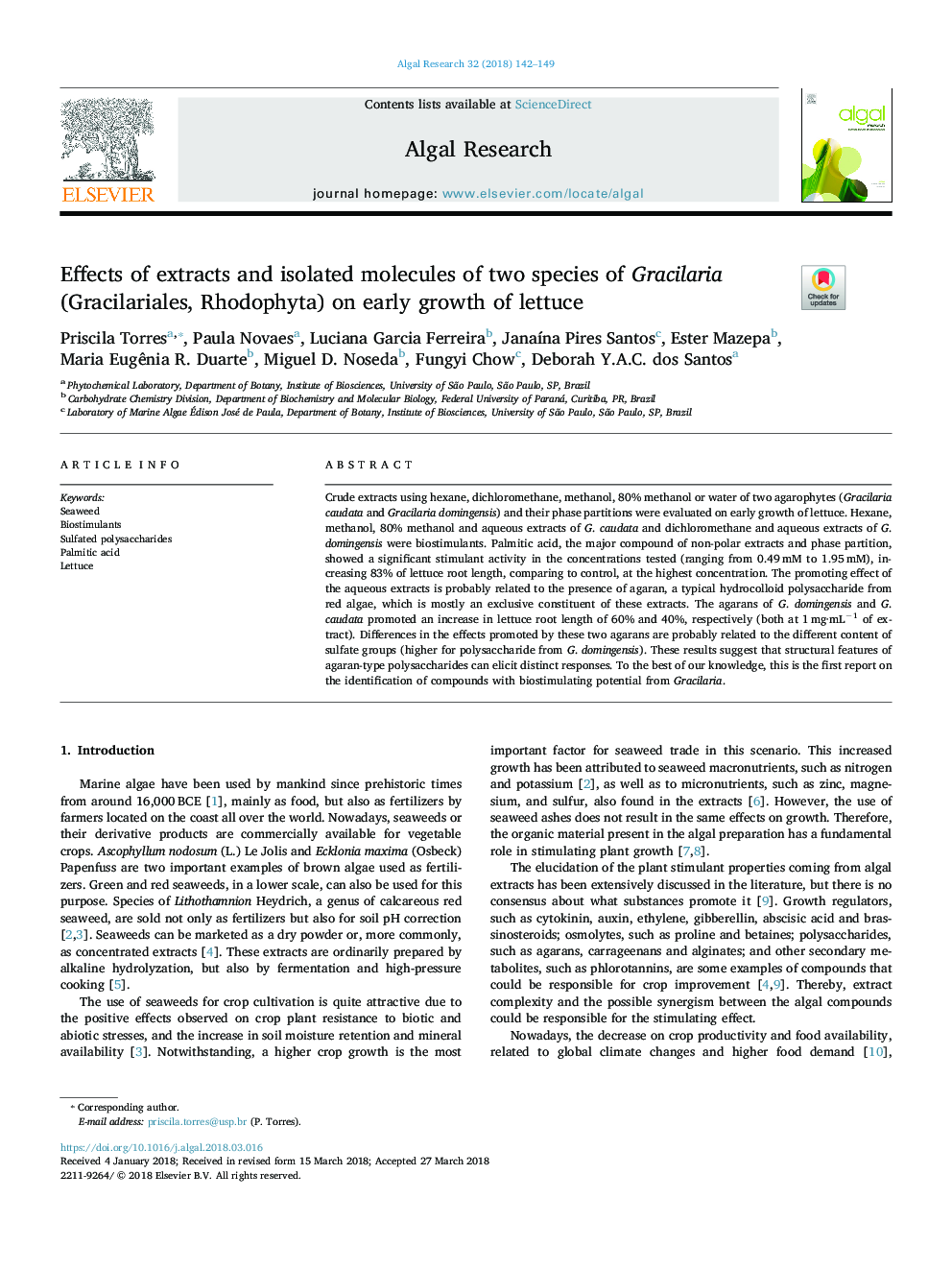| Article ID | Journal | Published Year | Pages | File Type |
|---|---|---|---|---|
| 8085740 | Algal Research | 2018 | 8 Pages |
Abstract
Crude extracts using hexane, dichloromethane, methanol, 80% methanol or water of two agarophytes (Gracilaria caudata and Gracilaria domingensis) and their phase partitions were evaluated on early growth of lettuce. Hexane, methanol, 80% methanol and aqueous extracts of G. caudata and dichloromethane and aqueous extracts of G. domingensis were biostimulants. Palmitic acid, the major compound of non-polar extracts and phase partition, showed a significant stimulant activity in the concentrations tested (ranging from 0.49â¯mM to 1.95â¯mM), increasing 83% of lettuce root length, comparing to control, at the highest concentration. The promoting effect of the aqueous extracts is probably related to the presence of agaran, a typical hydrocolloid polysaccharide from red algae, which is mostly an exclusive constituent of these extracts. The agarans of G. domingensis and G. caudata promoted an increase in lettuce root length of 60% and 40%, respectively (both at 1â¯mg·mLâ1 of extract). Differences in the effects promoted by these two agarans are probably related to the different content of sulfate groups (higher for polysaccharide from G. domingensis). These results suggest that structural features of agaran-type polysaccharides can elicit distinct responses. To the best of our knowledge, this is the first report on the identification of compounds with biostimulating potential from Gracilaria.
Related Topics
Physical Sciences and Engineering
Energy
Renewable Energy, Sustainability and the Environment
Authors
Priscila Torres, Paula Novaes, Luciana Garcia Ferreira, JanaÃna Pires Santos, Ester Mazepa, Maria Eugênia R. Duarte, Miguel D. Noseda, Fungyi Chow, Deborah Y.A.C. dos Santos,
